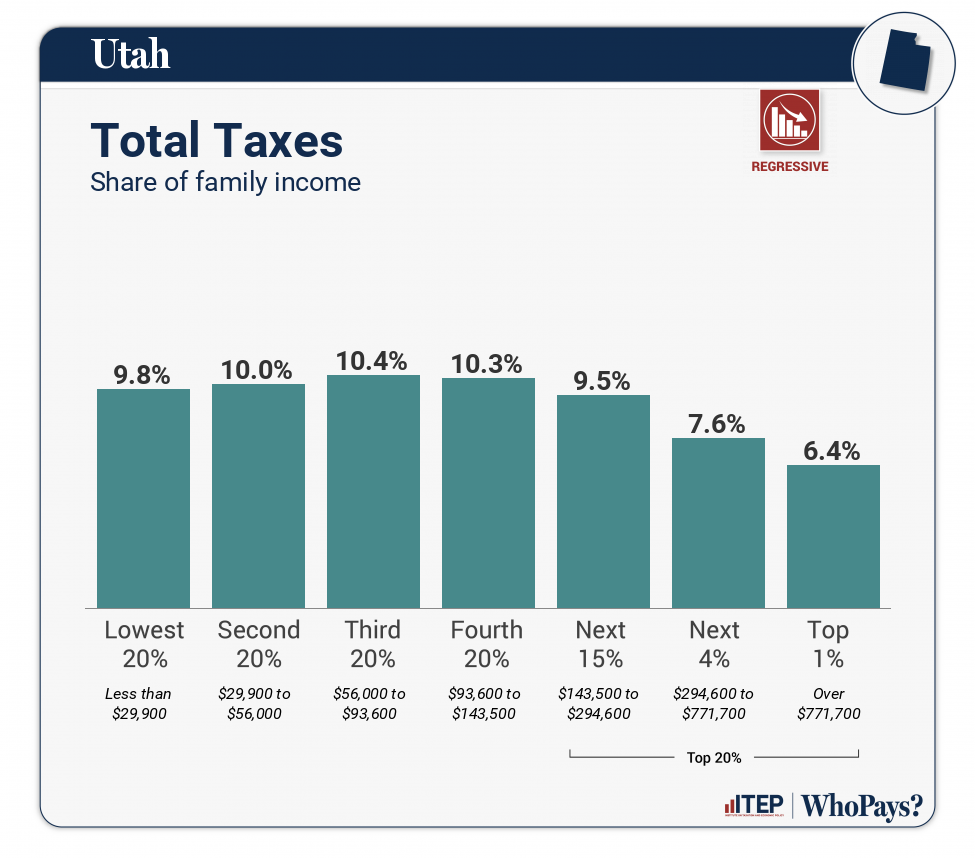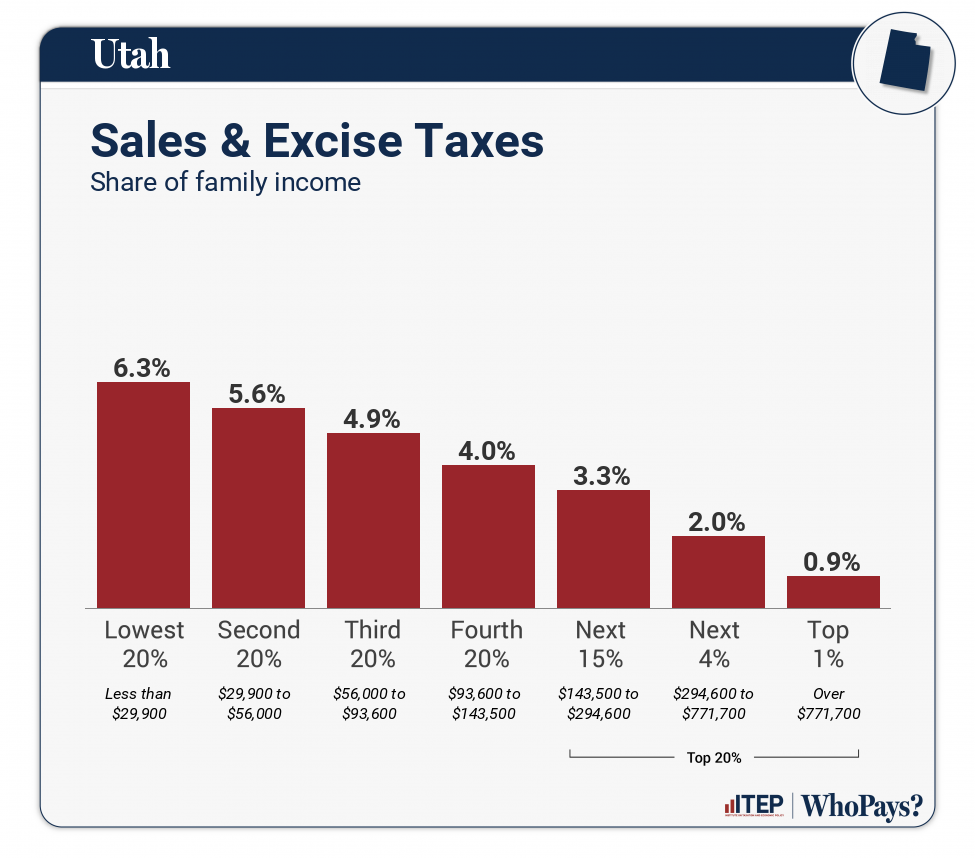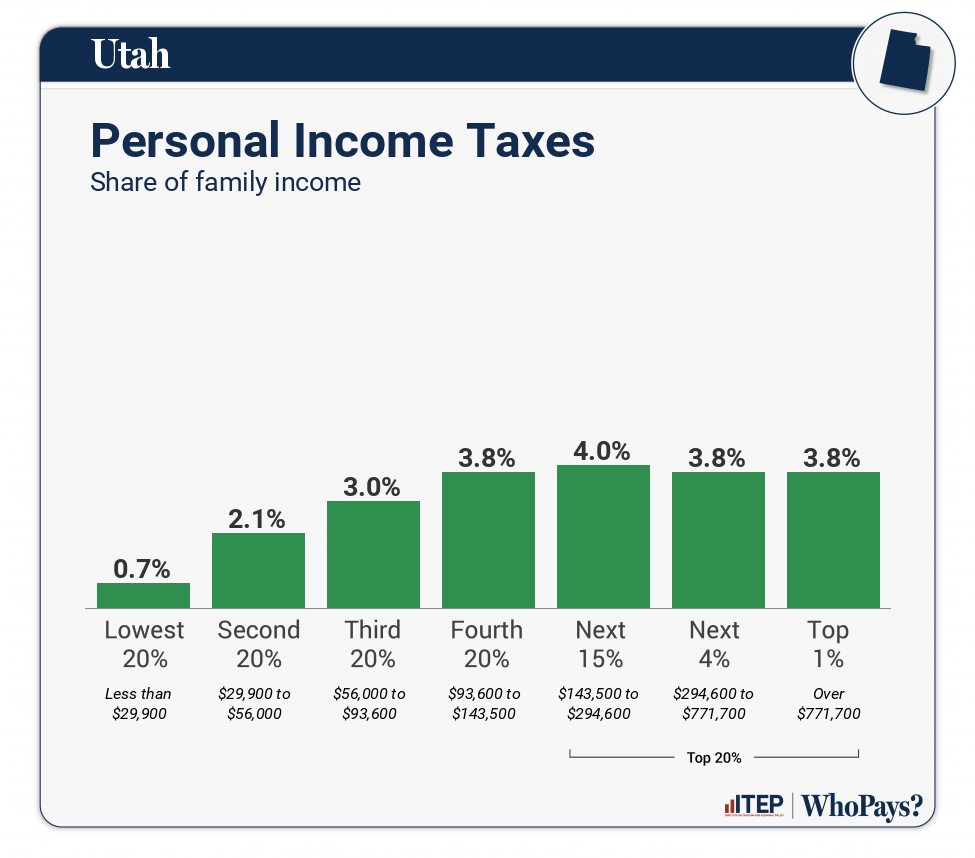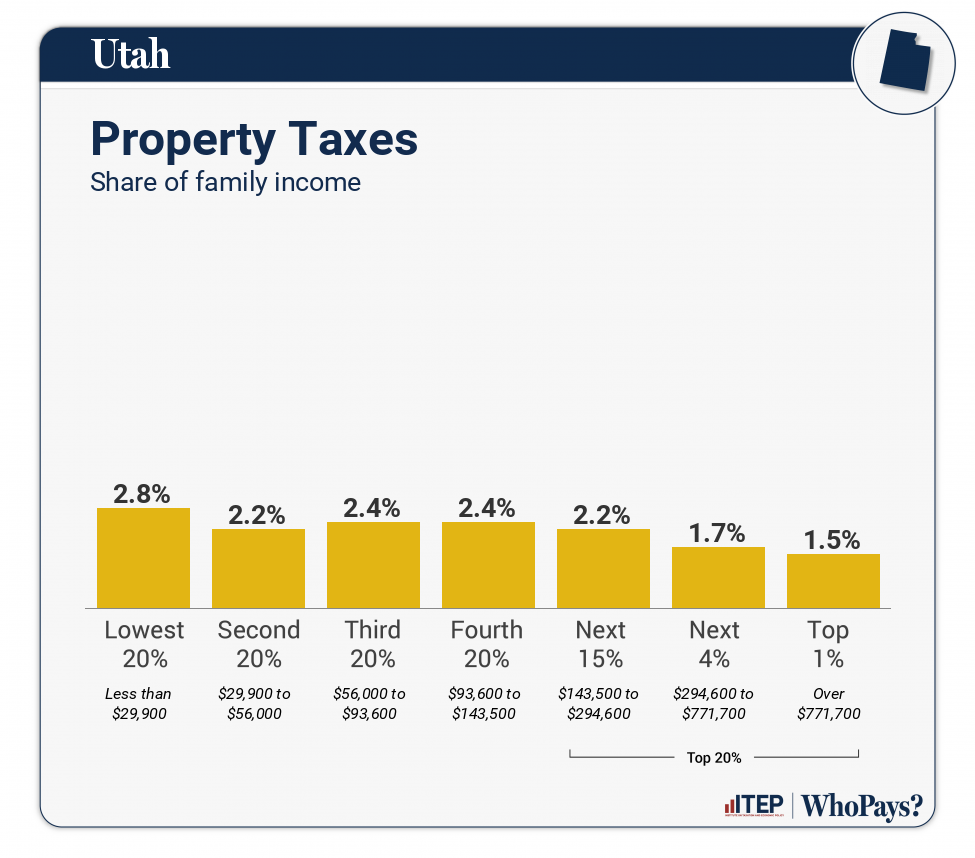Utah: Who Pays? 7th Edition

Utah
Download PDF
State and local tax shares of family income
| Top 20% | |||||||
| Income Group | Lowest 20% | Second 20% | Middle 20% | Fourth 20% | Next 15% | Next 4% | Top 1% |
| Income Range | Less than $29,900 | $29,900 to $56,000 | $56,000 to $93,600 | $93,600 to $143,500 | $143,500 to $294,600 | $294,600 to $771,700 | Over $771,700 |
| Average Income in Group | $18,600 | $42,700 | $72,600 | $118,800 | $188,400 | $430,300 | $2,788,100 |
| Sales & Excise Taxes | 6.3% | 5.6% | 4.9% | 4% | 3.3% | 2% | 0.9% |
| General Sales–Individuals | 3.9% | 3.6% | 3.3% | 2.7% | 2.1% | 1.2% | 0.3% |
| Other Sales & Excise–Ind | 1.1% | 0.8% | 0.6% | 0.5% | 0.3% | 0.2% | 0% |
| Sales & Excise–Business | 1.2% | 1.1% | 1% | 0.9% | 0.8% | 0.6% | 0.6% |
| Property Taxes | 2.8% | 2.2% | 2.4% | 2.4% | 2.2% | 1.7% | 1.5% |
| Home, Rent, Car–Individuals | 2.2% | 1.6% | 1.9% | 1.9% | 1.6% | 1% | 0.2% |
| Other Property Taxes | 0.5% | 0.6% | 0.5% | 0.5% | 0.5% | 0.7% | 1.3% |
| Income Taxes | 0.7% | 2.1% | 3% | 3.8% | 4% | 3.8% | 3.9% |
| Personal Income Taxes | 0.7% | 2.1% | 3% | 3.8% | 4% | 3.8% | 3.8% |
| Corporate Income Taxes | 0% | 0% | 0% | 0% | 0% | 0% | 0.1% |
| Other Taxes | 0.1% | 0.1% | 0.1% | 0.1% | 0.1% | 0.1% | 0.1% |
| TOTAL TAXES | 9.8% | 10% | 10.4% | 10.3% | 9.5% | 7.6% | 6.4% |
| Individual figures may not sum to totals due to rounding. | |||||||
ITEP Tax Inequality Index
ITEP’s Tax Inequality Index measures the effects of each state’s tax system on income inequality. According to this measure, Utah has the 29th most regressive state and local tax system in the country. Income disparities are larger in Utah after state and local taxes are collected than before. (See Appendix B for state-by-state rankings and the report methodology for additional detail.)
Tax features driving the data in Utah
|
Requires combined reporting for the corporate income tax; some foreign tax haven income is partially taxed through GILTI inclusion
Targeted credit based on federal standard or itemized deductions to low- and middle-income filers
Provides a Child Tax Credit (CTC) for young children
Provides an Earned Income Tax Credit (EITC)
|
|
|
No refundable income tax credits to offset sales, excise, and property taxes
State sales tax base includes groceries, though taxed at a lower rate
Nonrefundable EITC and CTC are limited in reach
Does not levy a tax on estates or inheritances
Local sales tax bases include groceries
Personal income tax uses a flat rate
|




